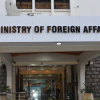Key Updates to Canada's Foreign Worker Program: A Complete Overview

In 2024, significant reforms were implemented in Canada’s Temporary Foreign Worker Program (TFWP), aimed at addressing pressing labour market challenges and enhancing regulatory compliance.
These changes, effective throughout the year, reflect the federal government’s strategic response to evolving economic needs. One of the key adjustments involved the reduction of the Labour Market Impact Assessment (LMIA) validity period, which decreased from 12 months to six months as of May 1. This modification seeks to streamline the hiring process for foreign workers while preserving a robust assessment framework.
However, employers within the Recognized Employer Pilot program remain exempt from this change, indicating a tailored approach to labour market management. On August 28, the government rescinded a temporary public policy that allowed visitors to apply for job-offer-supported work permits from within Canada—a measure originally put in place as a pandemic response in August 2020.
The withdrawal of this policy aligns recruitment processes with pre-pandemic standards, requiring many guests to leave Canada before applying for work permits. Furthermore, the government announced on August 26 that it would suspend the processing of low-wage LMIAs in census metropolitan areas (CMAs) characterized by unemployment rates at or above 6%.
This suspension, set to take effect on September 26, 2024, is geared toward prioritizing local employment in regions with higher joblessness, though exceptions are permitted in sectors such as primary agriculture, food processing, fish processing, construction, and healthcare. In September, additional changes were made, including a reduction in the maximum duration of employment for workers hired through the low-wage stream, which has been cut from two years to one year, starting September 26.
Additionally, the federal government lowered the cap on the percentage of low-wage workers an employer can contract through the TFWP from 20% to 10% of their total workforce. Notably, specific sectors like construction and healthcare will maintain a 20% cap, reflecting continued labour demands in those fields. Effective October 28, employers will no longer accept attestations from professionals such as lawyers, Chartered Professional Accountants (CPAs), or financial institution officials as sufficient proof of providing goods or services.
This shift requires more direct documentation to bolster the authenticity of submitted information. In a parallel move, Employment and Social Development Canada (ESDC) raised the minimum hourly wage for the high-wage stream of the TFWP. Starting November 8, candidates in this stream must earn at least 20% above the median wage for their position within their region or comparable to the wages of current employees at the same employer—ensuring competitive compensation.
The Immigration Levels Plan, announced on October 24, set annual targets for TFWP work permits, targeting a net increase of 82,000 permits in 2025, with similar projections for 2026 and 2027. This aligns with the government’s goal of reducing temporary resident levels from 7% to 5% of Canada’s total population by the end of 2026. Additionally, the federal Standing Committee on Citizenship and Immigration (CIMM) conducted a series of meetings during 2024, ultimately submitting recommendations for further changes to the TFWP.
These recommendations emphasize ongoing refinements to meet the dynamic requirements of Canada’s labour market and economic landscape. Overall, the 2024 reformations to the TFWP signify a comprehensive effort by the Canadian federal government to balance labour market demands with regulatory oversight, ensuring that the program remains effective and fair.








Add new comment